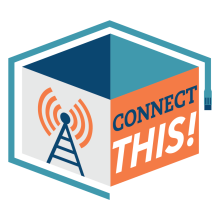The failure of policy and leadership at the federal level in addressing the digital divide was ever more clearly exposed as Covid-19 restrictions were put into place last spring. And, as the pandemic continues to rage, daunting connectivity challenges remain.
Yes, the Connect America Fund (CAF) II program has doled out over $11 billion since 2015 in subsidies to the big telcos like AT&T, CenturyLink, Frontier, Windstream, and Consolidated ostensibly to upgrade rural broadband to speeds of at least 10/1 Megabits per second (Mbps). But, as Doug Dawson, president of CCG Consulting notes, it’s been a massive subsidy failure given that “even in 2015, it was ludicrous to spend money to build 10/1 Mbps broadband” – the same year the FCC defined broadband as 25/3 Mbps, which means “the FCC was investing in new Internet infrastructure in 2015 that didn’t qualify as broadband at the time of the award of funding.”
And there is reason to doubt that those subsidized upgrades were even completed, even as the FCC just extended the CAF II program for a seventh year.
So as states — and in many instances, local municipalities — step into the breach, the National Governors Association has released a new report that outlines a list of strategies governors can use to increase broadband access in underserved communities.
Published just before Thanksgiving, the report first lays out the challenge:
According to the FCC, in 2018, at least 18.3 million people lacked access to fixed broadband in the United States that meets minimum [I]nternet access speed of 25/3. 1 Of those 18.3 million people, representing 6 percent of the total population, 14 million live in rural areas and 1 million live on Tribal lands, which amounts to 22 percent and 28 percent of those respective geographic populations [even as] studies have claimed that the FCC data is undercounting the number of people in the U.S. without fixed broadband access, and that the total may be as high as 42 million people.



